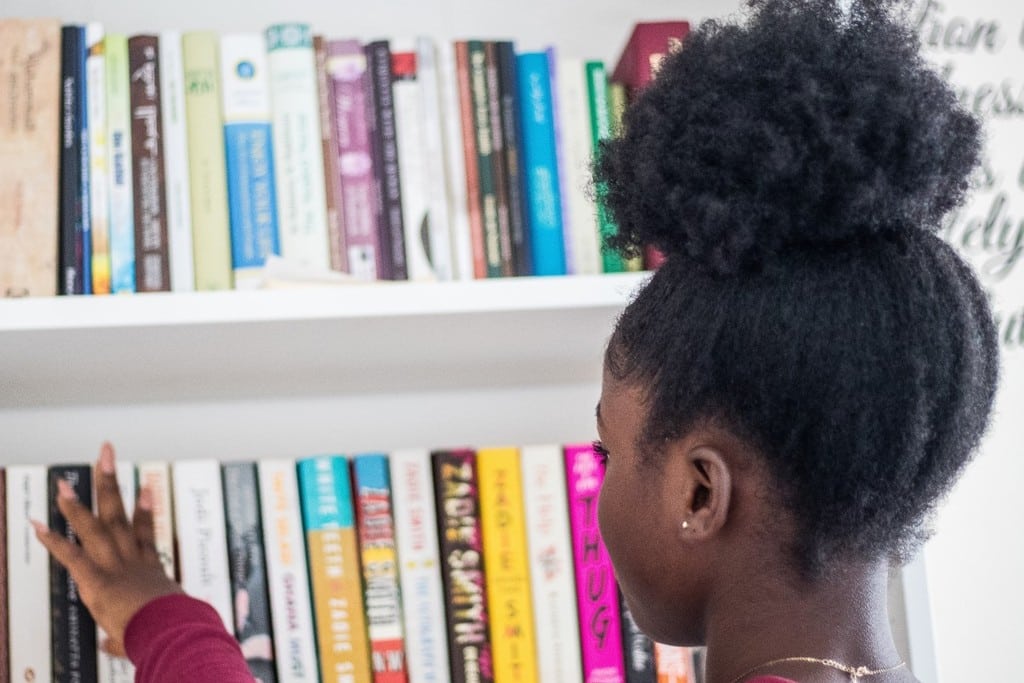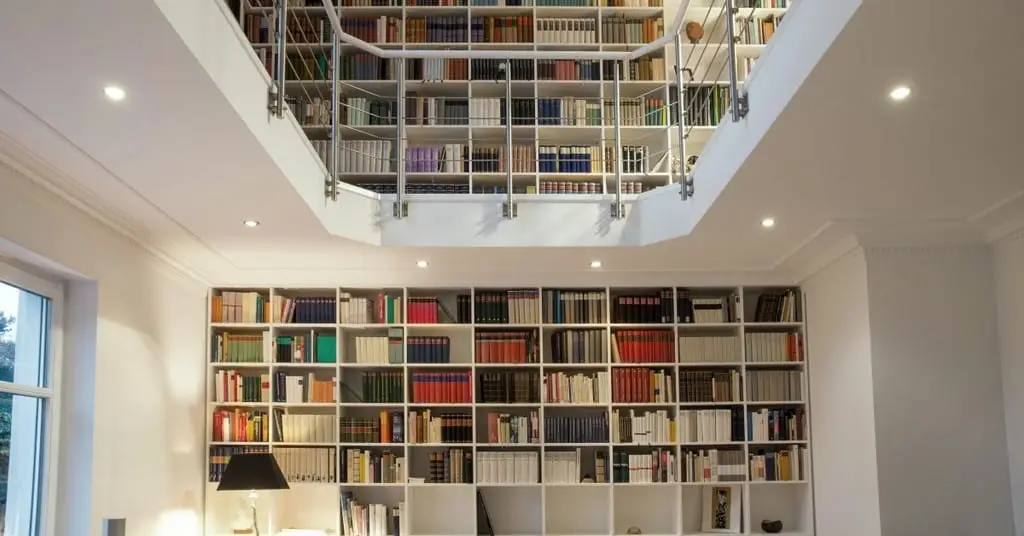In this article:
- Safe shelving and storage
- Making your reading space your own
- Special considerations for book collectors
- Basic book care
We all know a book lover, right? Studies show that 28% of Americans are regular readers, finishing six or more books per year.
Those who love to read are often challenged with storage and care for an extensive home library. From cases and shelves to an entire home library, we spend a surprising amount of resources making our books feel at home.
What avid readers may not know is that proper storage and care for books have a surprisingly big impact on the health of your home, too. This is most important if you have a huge book stash or collect antique books. With proper care and proactive solutions, your books and home can live in harmony.
Safe shelving and storage
The first obstacle most avid readers face is finding the right storage solution for their collection. While your first instinct may be to do a quick shelf install, it’s important to plan out your project. Books are considerably heavy, so be sure that you count your collection to estimate how much weight your storage solution will need to accommodate. Pick the right storage solution for the weight and size of your books:
Open-end to open-end shelves hold the least weight. A standard 3-foot shelf can hold about 135 pounds. Wall-to-open-end shelves hold more, roughly 150 pounds for a standard shelf. Lastly, wall-to-wall shelves hold the most weight, roughly 180 pounds for a standard shelf.
If your collection is larger than a single-shelf installation requires, free-standing bookcases can be a good option. Be sure that you anchor bookcases to the wall. Not only is this important for preventing personal injury, but it can also help avoid damage to your walls and floors in the event of an earthquake.
For those with hundreds or thousands of books, you’re likely considering a home library setup. Built-in bookshelves provide additional design elements to your room, which can increase the home’s resale value. Additionally, they tend to be very sturdy and hold the most weight.
Why does weight matter?
Planning your shelving solution around the weight of your book collection can save you time, money, and a headache. Overloading shelves with too much weight can rip the shelf off, damaging the wall or the floor it comes in contact with.
We recommend avoiding easy-mount floating shelves, even though they can be very pretty. These hold the least weight and are at the highest risk of falling and causing damage.
Making your reading space your own
Now that you know how to protect your books and keep them in perfect condition, it’s time to relax and enjoy your brand-new reading nook or home library.
Home library
A guest bedroom or spare room makes an excellent place for a nice home library. If you already have a separate home office, add a nice pair of bookshelves to store and organize your favorite books. You can also set up a nice dining or living room corner and install some built-in shelving. Make your new home library as comfortable as possible by adding a nice chair, a sturdy table, and a floor lamp, so it’s easy to see when you’re reading at night.
Reading nook
Consider combining two spaces together or designing a separate space for reading alone in peace and quiet. If you combine two areas of your home, consider adding a cozy reading nook to a storage room, playroom, or home office/study room. If you prefer to read in a quiet and solitary space, then it might not be ideal to set up your home library next to your child’s playroom. Look for other areas where you can enjoy books in silence, such as a corner of your bedroom or living room, an area underneath the stairs, or even outside on your back porch under a shady cover.
Design
When you’re thinking about the design of your new library, there are a few important things to keep in mind.
- Will this space be for you alone, the whole family, or for your children? Design the color scheme, décor, and furniture based on the people who will use this room the most.
- Choose furniture and decorative items based on your personal style. For example, add a mid-century modern-inspired sofa and shelving if you love modern design. If you prefer a more traditional space, bring in an oversized leather sofa and some classic table lamps.
- Go online and talk to other book lovers for some inspiration. You can also gather great ideas from websites like Pinterest or a home interior design magazine. Create a mood board with your favorite ideas and use it to inspire you as you decorate and design your reading nook.
Special considerations for book collectors
Mold and mildew
Book collectors know all too well that mold and mildew can take down your entire personal library. Not only is proper care and mold prevention vital for your home library, it’s also critical for preventing a bigger and more expensive problem at home.
Once introduced into your home, mold and mildew can infest walls and floors and is incredibly difficult to get rid of. It can even cause your home to fail a home inspection and make it difficult or impossible to sell in a tight market. Even worse, an infestation can also cause health problems, so it’s most important to prevent mold before it starts.
Here are a few ideas to prevent a mold infestation
- Ensure proper ventilation
- Prevent dampness with a dehumidifier or air purifier
- Address moisture problems as soon as they happen, and be sure books and belongings are fully dry before you put them back
- If you’re moving books into a new home, be sure to get it inspected for mold ahead of time
- Store your books in an area with proper ventilation, so the air doesn’t become stale or stagnant. Rooms without good ventilation could cause humidity to build up over time.
- Keep the temperature in your book room cool at all times. The ideal room temperature to store books is approximately 68 to 72 degrees Fahrenheit. Storing your books in a temperature-controlled room where you can adjust the thermostat is ideal. Use a moisture meter to check the humidity levels, which should be at approximately 35 to 50% anywhere that books are kept.
Learn the signs of book mold and mildew
Keep an eye out for the telltale signs of mold and mildew in your home library. If you detect any of them, consider quarantining that book and its neighbors. This can prevent a broader infestation that can transfer to your bookshelves and walls.
Signs of mold and mildew
- Fuzzy growth in any color
- Stringy white filament
- Evidence of water damage
- Powdery or flaky layers
Pests
Even if you practice proper book storage and handling, pests can sometimes pose a problem and threaten the integrity of your books. A professional home inspector can provide you with regular pest checks and make suggestions for keeping pests at bay. Follow these tips to help keep pests from bothering your beloved home library.
- Keep food away from your books, since cockroaches and other insects like to linger around and eat crumbs. Eating or drinking near your books and spilling something will lure insects to the area, and they may decide to take up residence inside your books.
- Store your books properly and keep them out of cardboard boxes. Insects love to make nests in cardboard, so it’s best to use plastic boxes instead. Choose durable plastic storage boxes with a tightly-sealing lid to keep bugs and moisture out.
- Never leave your books on the floor, and always return them to their shelves when you’re done reading them. Not only will this keep your books from getting damaged, but it’ll also keep them away from bugs that might be crawling around on the floor.
- Keep an eye on your books and inspect them regularly for any signs of pest activity. Some signs of pests in your books may include:
- Tiny holes in the pages or covers of your books may indicate that bugs are eating them
- Microscopic “dots” or black marks could be an indication of insect feces
- Pieces of shed skin, wings, or shells inside of your books are a clear sign that pests are infiltrating your library
Basic book care
There are some basic methods of book care that every bibliophile should follow. These simple steps will ensure that your books last longer and remain in excellent condition long into the future.
- Keep your books out of direct sunlight. Exposure to UV rays from the sun can cause your book covers to fade and become discolored over time.
- Dust your books regularly to keep them in great shape. Too much dust can scratch the cover and spine of your books, and it also entices pests to infiltrate the pages.
- Always use the correct placement and storage of your books by placing them upright on shelves or laying them flat and stacking them on top of one another. Keep books of similar size next to each other, so they’re properly supported. Don’t allow your books to lean to one side.
- To preserve your books for longer, protect them with plastic covers. Make sure the covers are specifically designed for books, so they don’t cause unexpected damage to the cover.
- When removing your books from the shelf, grip both sides of the spine at the middle section rather than pulling hard at the top of the spine.
- Create a designated space just for your books by designing a separate library, or use a high-quality, sturdy bookshelf to store them all together. Store the books in a cool area with dry air and relative humidity of about 35%. Avoid storing books in the attic or basement, where there’s a higher risk of leaks and fluctuations in humidity.
- Always wash and dry your hands thoroughly before handling a book to prevent transferring dirt and oils onto the cover, spine, or pages. Avoid eating or drinking when you’re reading to prevent accidental spills, which could ruin your books.
- Never use paper clips or create “dog ears” to mark a page. Avoid using rubber bands, tape, or glue on your books. Instead, mark pages with an acid-free bookmark designed especially for books to preserve the pages and keep them in optimum condition.

Reading is one of the best ways to expand your mind and your horizons. With these tips, you can design a fantastic reading nook or home library while protecting your beloved books from damage. Preventing pests and mold will ensure that your books stay in terrific condition for years to come. Get creative, have some fun, and enjoy reading as much as you can whenever you have some free time at home.

